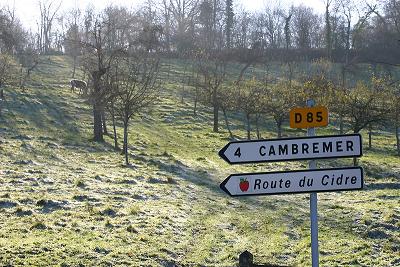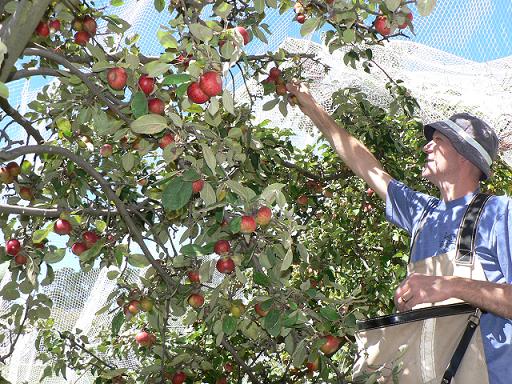
This article was featured in the January issue of Bartender Magazine
By Edward Washington
Like wine, the category of cider can often fall into two main areas; mass produced high volume products or smaller, handcrafted more artisanal operations. Unfortunately the former style has been the dominant side of the market in Australia for many years – leading to an unfavourable reputation for cider and a hard job to convince people of its merits. For Australian (WET) taxation the definition of a cider is: the product of the complete or partial fermentation of the juice or must of apples or pears, so ‘pear-cider’ is an appropriate term. With the cider industry in Australia currently experiencing a large amount of consumer and trade interest, it is important look at the industry as a whole and for new ciders on the market it is important to showcase themselves in the best possible light.
“Small, boutique or ‘craft’ cider producers can play a very important role in shaping the future development of the cider category in Australia, says Richard Coombes of the recently launched Batlow Cider. “It’s fair to say that boutique or craft producers are very focused on the quality aspect of their product and are absolutely committed in making sure that their process puts quality as the top priority.”
“Magners is 100 per cent imported from Ireland and Bulmers is produced in Campbeltown in New South Wales.” Andrew Herd, Suntory Australia
According to a report released by The Nielsen Company early in 2010 cider only made up around 1.1 per cent value share of national off-premise liquor sales. However with an obvious boom in popularity, ciders and perrys (often labeled ‘Pear-ciders’) are sure to experience a phenomenal growth in sale share in the near future. With a similar raise in the advertising dollars being spent on the category annually, as well as some 20 new brands being introduced over the last 24 months the category seems to be hitting its stride on the wake of new drinking trends.
Nielsen’s Executive Director for Liquor, Michael Walton recently commented that; “cider is a seasonal beverage that aligns itself perfectly with Australia’s warm climate. Considering that cider accounts for 12.2 per cent value share the liquor market in Great Britain (ours is just over 1 per cent), there is clearly a significant gap in the Australian liquor trade, that could prove to be very lucrative and rewarding for those who embrace this opportunity well.”
One of Ireland’s major exports to Australia is Magners Cider and Andrew Herd, from Suntory Australia, says that there are a few key differences between this brand and some of the other big players on the Australian market. “There is a lot of confusion that currently exists between Bulmers and Magners in the trade. The key difference is that Magners is 100 per cent imported from Ireland and Bulmers is produced in Campbeltown in New South Wales,” explains Herd.
There are also other areas of confusion that become sticking points of debate, such as; whether or not cider has to be made from cider apples? Technically not, according to David Pickering from the Orange Agricultural Institute in New South Wales, “traditionally in Norfolk, England, cider was often made with more regular eating apples,” Pickering says. So while cider apples might be desirable it’s more the techniques behind cider-making that has the greatest impact on the product.
The French Connection

For a product that has such a long and distinguished history it is wonderful that today we are seeing a rejuvenation of its traditional practice, with many new cider production companies choosing to make a handcrafted product with a focus on quality. Historically, the north-east regions of France were well suited for cider apple trees, but not for grapes, hence the strong regional association and Orange in New South Wales is a well placed area for local cider apple trees. Cider and Perry making was well established in the French regions of Normandy and Brittany during the mediaeval period, and soon became well known throughout Ireland and England. The 17th and 18th century saw its popularity peak however it began a slow decline that has lasted (according to some) until today. In 17th century England, cider was often paid to hay farmers as a portion of their wage. During the height of the harvest, they were issued slightly more and could be drinking up to nine pints a day.
Australian Practices

Considering that there are so few regulations and so many ‘loop-holes’ within the Australian industry there are justified quality concerns from new and established Australian producers. Currently, Australia does not have a dedicated Cider Association that drives quality control with the home grown products, or a strictly defined or regulatory process of cider production. Instead it is up to the individual producers to stake their reputation on their product.
“There are no industry codes of best practice or industry quality regulations like the wine industry has here in Australia or the cider industry has in the UK or France,” James Kendell, from Small Acres Cyder, told Bartender. Similarly, Coombes states; “There are increasing talks between a number of local cider makers in establishing an official association to represent the local industry and given the recent rapid growth of cider in Australia, it is important that the local industry is properly represented by its members and they have a voice.”
Recently, the UK’s National Association of Cider Makers welcomed recent law changes in England that established that cider must have at least 35% apple juice content when sold in the UK – so knowing that the fully imported Magners and Westons ciders fall under UK guidelines is reassuring. However, many of these premium producers consider this to be far to low. “My view is that cider should be made from 100% apple juice,” states Kendell – a sentiment echoed throughout the industry.
Like wine, it is the quality of the fruit that makes for the best possible platform and the choice of region is crucial when looking to source apples. Some large scale, commercial producers will use low grade apples, apple concentrate and added sugar to produce bulk ‘cider’ – so do some research and you will turn up some gems.
It’s what goes into it…
Like the famed blended wines of the Bordeaux region, the producers of cider create their final products by blending together different styles of apples. This allows them to get the best out of each style of apple and results in a well balanced style.
Apple styles:
- ‘Sweets’ contain high levels of sugar. This helps to encourage fermentation, and raise the possible alcohol level of the cider. This apple is low in acids and tannins.
- ‘Sharps’ are high in acidity adding pronounced ‘bite’ to the cider. They tend to be low in sugar content and have little tannin.
- ‘Bittersweets’ are high in sugar as well as containing raised levels of tannins. This causes them to taste bitter and astringent. In all but the sweetest ciders a certain amount of bitterness is expected.
- ‘Bittersharps’ are high in both tannins and fruit acids.
Pears:
- The pears used for producing Perry are higher in tannin and acid than eating or cooking pears. They are usually smaller in size as well.
- Perry pear trees are incredibly durable and long living with the ability to be fully productive for 250 years.

